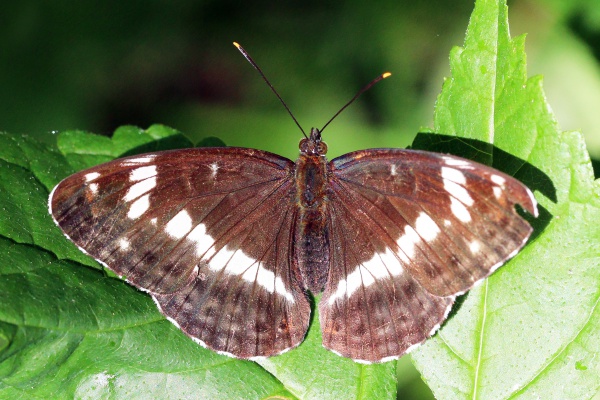Facts About Limenitis camilla
The white admiral, scientifically known as Limenitis camilla, is a captivating butterfly belonging to the Nymphalidae family. These elegant insects can be observed fluttering through woodlands in southern Britain, Europe, extending all the way to Japan. Their striking black wings, adorned with white bands, provide excellent camouflage, aiding in predator evasion. With a wingspan ranging from 60 to 65 mm, their flight combines rapid wing beats with fluid glides, creating a graceful spectacle.
Adult white admirals thrive on nectar from bramble blossoms and honeydew. When it comes to egg-laying, females seek out dense woodland areas abundant with honeysuckle, methodically depositing their eggs one by one on the leaves. The caterpillars that emerge are green and adorned with red-brown hairs, showcasing a unique strategy of camouflage by mixing their droppings with silk to conceal themselves on the leaves effectively. As autumn approaches, these caterpillars construct a cozy, tent-like structure called a hibernaculum from leaf tissue and silk in which to hibernate. They remain secure through the winter, and with the arrival of spring, they molt to reveal a spiny green form. By summer, they pupate into a vibrant green and gold chrysalis, and in approximately two weeks, a new adult butterfly emerges.
These caterpillars primarily feed on various plants, with a special preference for different species of honeysuckle (Lonicera) and Weigela. The white admiral also has a couple of notable subspecies: L. c. camilla, which can be found across Europe, the Caucasus, and Transcaucasia, and L. c. japonica, which inhabits regions like Amur, Ussuri, Korea, and China.

 Ireland
Ireland